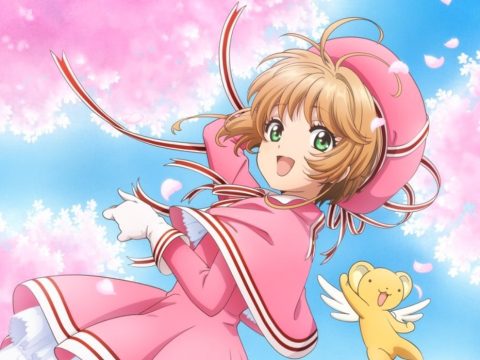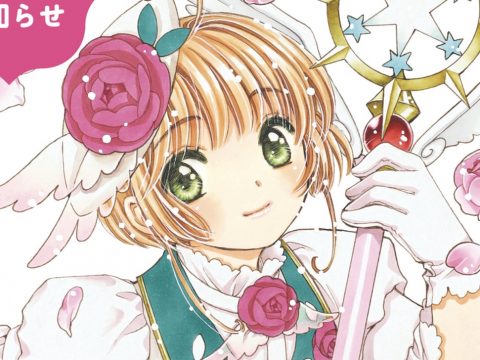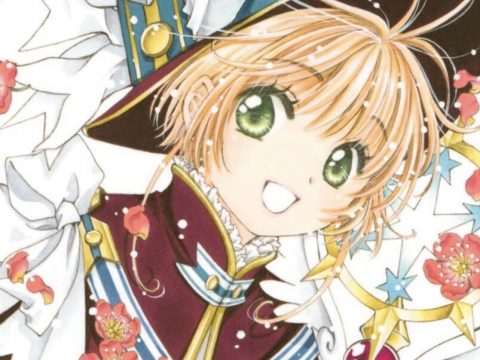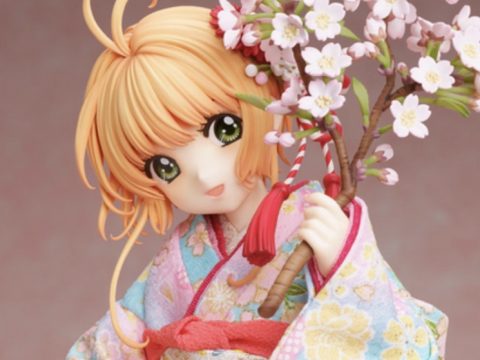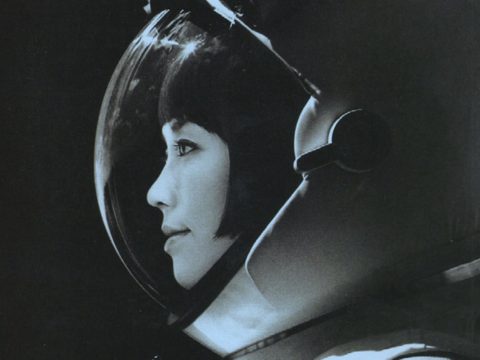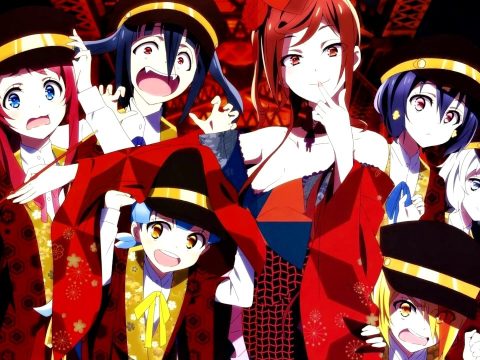 From now until the end of the year, Otaku USA e-News presents 98 Degrees: a deep dive straight into the anime of 1998. Which greats of ’98 would you like to see covered? Comment below or drop our editor a line.
From now until the end of the year, Otaku USA e-News presents 98 Degrees: a deep dive straight into the anime of 1998. Which greats of ’98 would you like to see covered? Comment below or drop our editor a line.
In 1998, the world was ready for a fresh new magical girl anime.
Sailor Moon had aired its final season, Sailor Stars, in 1997. A few other releases based on previously-animated properties would also come out in ’97. These included a new version of Cutie Honey aimed at the Sailor Moon crowd, another Magical Girl Pretty Sammy spin-off, and an OAV for Magic Knight Rayearth that was a darker retelling of the Rayearth story.
In short, we were quickly going through a magical girl slump, with most of the output largely made up of “safe” releases featuring pre-existing shows or characters. For many fans like myself, this was only really enough to tide us over until the next new thing started. Thankfully, we didn’t have to wait too long.
 Cardcaptor Sakura started airing in Japan in April 1998. Based on the manga by CLAMP, and their second foray into the magical girl genre, it featured a much softer, “cuter” art style than their first magical girl hit, Magic Knight Rayearth. And while Rayearth had been experimental for a magical girl series, Cardcaptor Sakura fell into the “traditional” archetypes that we were used to for the genre… at first glance, at least.
Cardcaptor Sakura started airing in Japan in April 1998. Based on the manga by CLAMP, and their second foray into the magical girl genre, it featured a much softer, “cuter” art style than their first magical girl hit, Magic Knight Rayearth. And while Rayearth had been experimental for a magical girl series, Cardcaptor Sakura fell into the “traditional” archetypes that we were used to for the genre… at first glance, at least.
Sakura Kinomoto is a normal elementary school girl who happens to find a mysterious book in her father’s basement that contains the magical Clow Cards. Opening the book, she unknowingly releases them, and they escape to various corners of her neighborhood. But also hiding in the book was the cards’ guardian, Cerberus (or just Kero-chan for short), who explains that it’s now Sakura’s job to recapture all of the cards before their magic causes too much trouble. Along with her best friend Tomoyo and other friends she meets along the way, Sakura solves problems and captures the cards in the episodic way we’re used to from a magical girl show.

While the concept doesn’t sound exactly new or exciting, CLAMP and the staff at Madhouse did things with this idea that weren’t the norm for a series aimed at elementary school kids. Famously, while Sakura does use magic to battle the many forms the Clow Cards take and seal them away for use later, she does not have a transformation sequence. She doesn’t even have a magical girl outfit! That’s where Tomoyo steps in. She absolutely loves fashion design, and realizes right away that if Sakura is going to be a real-life magical girl, she needs to look the part. Being from a wealthy family, she uses her design talent and unlimited resources to create not just a single magical girl outfit for Sakura, but an entire wardrobe: Dozens of outfits for any sort of occasion, weather situation, and/or foe to battle.
This instantly made the series more interesting because fans would never know what kind of outfit Sakura would wear next (and, incidentally, made for excellent marketing—more outfits meant more toys and dolls in different clothes!) Tomoyo would also help out Sakura with useful gadgets her mother’s company just so happened to have just invented—not to mention the occasional late-night chauffeured ride somewhere (accompanied by Tomoyo’s personal all-women bodyguards for safety, of course).
But arguably, the thing that makes Cardcaptor Sakura really stand out is the way it handled character relationships. Sakura Kinomoto isn’t that different from the magical girls before her. Much like Sailor Moon, one of Sakura’s greatest strengths is that she is kind and full of love. When Sakura met people who were different from her, she was always warm and accepting. But CLAMP took it a step further.
“I wanted to create, with Cardcaptor Sakura, a series with a girl who saw ‘minorities’ as normal,” said CLAMP head writer Nanase Ohkawa in an interview. “For example, Syaoran and Eriol are foreign exchange students, but to Sakura they’re the same as boys who transferred in from a local school. Similarly, Sakura believes in all the forms of love she sees.”
 In 1998, Cardcaptor Sakura was one of the first series (anime or otherwise) that younger fans would watch where a main character was friends with people of varying ages on the LGBTQ+ spectrum. While having gay or lesbian characters in shoujo (or CLAMP titles, for that matter) was nothing new, having multiple supporting characters falling under that umbrella, in which their identities were viewed as normal, was something less common—especially for a mainstream magical girl series aimed at a younger crowd.
In 1998, Cardcaptor Sakura was one of the first series (anime or otherwise) that younger fans would watch where a main character was friends with people of varying ages on the LGBTQ+ spectrum. While having gay or lesbian characters in shoujo (or CLAMP titles, for that matter) was nothing new, having multiple supporting characters falling under that umbrella, in which their identities were viewed as normal, was something less common—especially for a mainstream magical girl series aimed at a younger crowd.
While the way their sexuality was portrayed or explained wasn’t always perfect, the fact that they weren’t treated as “weird” or used as the butt of jokes was a big step up from how similar characters were handled in the past. It was almost always framed at coming from a place of love and understanding. For example, a moment when Sakura confesses her feelings of love to someone only to be told that, sorry, they prefer someone else who happens to be male. This rejection was met with disappointment by Sakura at first—but soon thereafter, she shows her love and support for who they are and still continues to be friends with them. Intentionally or not, this made Sakura a role model of empathy to viewers, and left a lasting impression on many young fans.
 CLAMP is somewhat notorious for always having a few characters that are involved in somewhat “troublesome” relationships (to put it lightly), and Cardcaptor Sakura couldn’t even escape this. But by and large, the ones that get the most focus in the story are actually pretty wholesome. We see her in a lot of heartfelt, healthy relationships we often didn’t see in a magical girl series. With Sakura’s mother having passed away, her relationship with her father is a very close and loving one. While she fights with her brother often, they both care deeply about each other. And in a fun twist, a rival for her affections eventually becomes her ally, her friend and, later, her main love interest.
CLAMP is somewhat notorious for always having a few characters that are involved in somewhat “troublesome” relationships (to put it lightly), and Cardcaptor Sakura couldn’t even escape this. But by and large, the ones that get the most focus in the story are actually pretty wholesome. We see her in a lot of heartfelt, healthy relationships we often didn’t see in a magical girl series. With Sakura’s mother having passed away, her relationship with her father is a very close and loving one. While she fights with her brother often, they both care deeply about each other. And in a fun twist, a rival for her affections eventually becomes her ally, her friend and, later, her main love interest.
Add to this the anime’s bright and colorful look (with direction from Morio Asaka, who would go onto direct beloved series like Chihayafuru, My Love Story!!, and return for Cardcaptor Sakura: Clear Card), the fun and catchy music, and the large cast of voice actor veterans lending their voices to these characters, it’s no wonder that it quickly became one of CLAMP’s most beloved series worldwide.
While many fans in North America’s first exposure to the series was the edited and watered down Cardcaptors version of the story, much like Sailor Moon‘s initial release, it led many to the manga and, eventually, the original version of the anime. A lot has changed in the world of anime since Cardcaptor Sakura‘s debut, and it’s amazing to think that fans watching the Clear Card sequel today don’t have to worry about things like heavily edited, “Westernized” versions of CLAMP’s creations like they once did. And they can watch both the original and new series as originally intended: a story of girl who saw the world through a lens of love and acceptance.
 Dawn H. is the host and producer of The Anime Nostalgia Podcast.
Dawn H. is the host and producer of The Anime Nostalgia Podcast.


